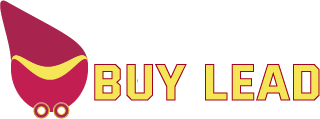Kaizen is a Japanese technology that includes philosophy, theory and management tools aim at achieving an advantage in the competitive struggle. In the management system, this technology is known under the concept of a continuous improvement process.
Traditional Management System and Kaizen: Main Differences
A significant contradiction between the production department and the sales department is the result of an incompletely develop system. Successful companies working according to the kaizen concept accumulate their efforts in the direction of bringing these two departments closer together. Such a company produces the goods that the market nes and in the quantity that can be sold.
The differences between the kaizen system and the traditional approach to management lie in literally every parameter.
12 Basic Principles of Kaizen
- Focus on customers. There is nothing more recent mobile phone number data important than satisfying the nes of the company’s customers.
- Continuous change. Small but constant improvements are the basis of the kaizen concept.
- Openly admitting problems. Without the existence of problems, improvement is impossible.
- Promoting openness in the company. Any suggestion, complaint or comment will be heard.
- Creation of work teams. All employees of the company join work teams and quality circles.
- Project management using cross-functional teams. The effectiveness of teams lies in their cooperation with each other.
- Forming “supportive relationships”. To achieve high results, employees must be involv in their work and have good relationships within the team.
- Horizontal development. The personal hubspot marketing hub: what it is and how to set it up experience of each employee becomes the achievement of the entire enterprise.
- Developing self-discipline. Self-control, respect for yourself, your colleagues and the company as a whole are important
- Self-improvement. Everyone is responsible for the range of tasks that are entrust to them.
- Informing each employee. Any information should be available to all employees.
- Standardization. Constant standardization is the basis for stable work.
Workplace arrangement, unnecessary losses and standardization
The three main principles of the kaizen system are workplace organization, elimination of unnecessary waste and standardization.
Elimination of unnecessary waste – stopping actions that do not bring benefits and slow down the work process. Most of the work in production consists of routine processes of transforming the source material into a product. It is necessary to eliminate those parts of the work process that do not make it more efficient. The kaizen system dating data assumes the existence of seven types of waste:
- Movements – every unproductive and unnecessary movement slows down the work process and complicates it.
- Waiting – If workers have to wait between production steps, this lengthens the overall cycle time.
- Technology – technology that is organiz incorrectly, causing contradictions and inconsistency in the actions of the company’s employees.
- Transportation – long distance, the process of lifting and lowering materials requires time.
- Defects – Re-producing defective products requires additional time and materials.
- Stockpiles – material purchas in excess does not bring any benefit.
- Overproduction – more goods than demand requires – means losses for the company.
Standardization of the work process creates a basis for stability, and according to the philosophy of kaizen, the system of standards must be constantly improv. If a problem occurs in production, it means that no standard was develop for this case, or it was not met, or it was not fully develop.
5 elements of the kaizen system
Five elements form the basis of the concept of kaizen. Each of these elements is important, because the philosophy of kaizen will become an effective and working tool only if all criteria are met.
The first element is teamwork. In order to achieve a common goal and maximize work efficiency, each employee of the enterprise must feel part of a single team. Teamwork is bas on making every effort for the company’s success, constant exchange of information, mutual training, and timely fulfillment of their direct responsibilities by each employee.
The fourth element is quality circles . The organization of quality circles at the enterprise is one of the mandatory elements of the concept. The circle team consists of employees of different levels; at meetings, the members of the circle exchange ideas, skills, and technologies. Thanks to constant interaction within the quality circles, employees are able to objectively assess the effectiveness of their overall work.
The fifth element is suggestions for improvement. Employees at any level must be confident in their ability to suggest improvements. Each of the suggest improvements, even the most absurd ones, must be taken into account and consider.
5 commands of the kaizen system
The word kaizen itself means “team”, and the system’s operation is bas on the creation and constant support of five teams, which differ from each other in the types of tasks they perform. All teams, except for the permanent one, work during kaizen sessions, which last from two to five days and are aim at solving a specific task.
Permanent team. Groups of people working at the enterprise on a daily basis. This team includes workers and employees who perform their direct duties on site.
Problem Solving Team.
Cross-functional team. A team of analysts that evaluates existing processes in an organization and develops methods for improving them. The team consists of company employees of different levels – ordinary specialists and managers of different areas.
Implementation Team. This type of team is form after methods for improving the work process have been develop. It includes members of all three teams describ above.
Small group . A team form to develop, implement, and apply specific or new processes. It includes workers and low-level performers, as well as department heads from the permanent team and the problem-solving team.
